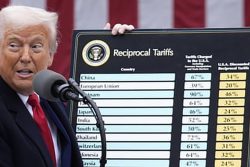Dear Editor,
In an Opinion Piece published on September 6, 2020, we stated that at the current rate of gas flaring at the Liza-1 well, 6,053 million tonnes/CO2eq will be released in 2020. This was overstated by a factor of 10.2 based on the latest figure as stated by the Institute for Sustainable Energy of Boston University, and the Center on Global Energy Policy of Colombia University using Bakken Oilfield Flares. Venting of gas (that is release without flaring) will release carbon dioxide equivalent to that magnitude. However if the gas is burnt fully, as is reported by ExxonMobil (i.e. 100% combusted) the equivalent carbon dioxide released will be 596 million tonnes/ CO2eq. The reason for this difference is that the greenhouse gas impact from methane which is the main component of the gas being flared, is some 10.2 times more than the greenhouse gas impact of carbon dioxide which is what methane becomes when flared (burnt). What this implies is that if the current trend continues, flaring of gas off Guyana’s coast will contribute as much as 596 million tonnes/CO2eq for 2020 (assuming 100% combustion), equivalent to 795 tonnes/ CO2eq per capita for the year. That is 6.23% of the carbon emitted from deforestation for 2018, or equivalent to 571 hectares of forest.
Be that as it may, flaring of gases should be kept at the absolute minimum if at all, and only in cases of emergencies. In Norway, all oil production facilities abide to a zero-flaring policy. We would expect no less from a company reputed to be first-in-class for its technology and operating procedures.
Oil Companies make their profit from carbon production. In Guyana they are operating in a country known for its carbon-reducing characteristics and policies. As a matter of principle, carbon producing companies should pay to play in carbon-reducing countries to ensure the net result is at worst carbon neutral, and at best carbon negative. Last year the total green bond market was worth US$257.7 billion. On the EU Emissions Trading Scheme, carbon is valued at EURO5/tonne. BP uses a value of US$40/tonne. These figures should give us a sense of the extent of global free-riding that carbon producers may be masking in global reducing countries such as Guyana.
Yours faithfully,
David Singh, PhD. Natural Resource Management Practitioner, Adjunct Faculty, Julie Ann Wrigley Global Institute of Sus-tainability, School of Sustainability, Arizona State University
Rory Fraser, PhD. Professor (Ret’d) Forest Economics and Policy
Timothy Laing, PhD. Senior Lecturer Economics, Brighton Business School, University of Brighton and GREEN Institute, University of Guyana









